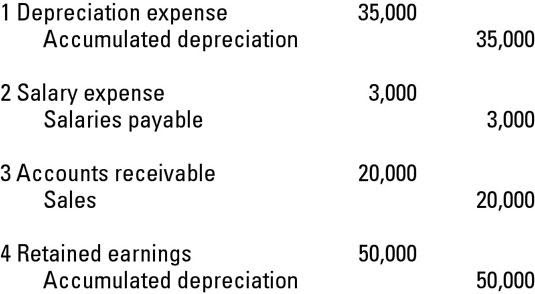
Running your business more efficiently is another way to improve net operating income. One way to reduce operating expenses is by reducing your spending on extra business expenses such as unused subscriptions and privileges. Even in the same industry, one business owner may classify certain expenses as everyday expenses, while another might classify them differently. Operating income, operating profit, and earnings before interest and taxes (EBIT) are all terms that relate to the earnings of a business. These terms are sometimes used interchangeably as they generally refer to the same concept, though there are slight differences in how each of these terms may be interpreted. A restaurant purchases meat, vegetables, and other products that it will use in its meals.

Gross profit is the net profit earned after the cost of goods sold is subtracted from net revenue. Operating expenses are the selling, administrative, and general expenses necessary to operate a business, though this does not include interest or taxes. Because operating expenses do not incorporate allocated costs, depreciation and amortization must also be subtracted. Net operating income only looks at the revenue earned from your core business activities and your total operating expenses.
How Do You Calculate Operating Income?
On a cash basis, net income is the actual cash that is brought in minus the actual cash that is paid out. On an accrual basis, net income is calculated by taking into account the revenues and expenses that have been earned but not yet paid. This calculation takes into account the timing of when the revenue and expenses are earned and incurred. Operating income is the profit generated by the business after deducting operating expenses, such as administration costs, depreciation and wages. It represents the profit a company makes from its regular business activities.
To calculate gross income, you would subtract the $40,000 in COGS from your $500,000 in revenue. You’d then need to subtract gross income from total operating expenses. Finally, subtracting $164,000 from $460,000 gives you an operating income of $296,000. Some expense form template of the SG&A expenses may appear as separate amounts such as depreciation and amortization, and research and development. Operating profit, like gross profit and net profit, is a key financial metric used to determine the company’s worth for a potential buyout.
What is included in operating income?
In contrast to operating income, non-operating income is the portion of an organization’s income that is derived from activities not related to its core business operations. It can include items such as dividend income, interest, gains or losses from investments, as well as those incurred in foreign exchange and asset write-downs. Analysts look for operating income on a company’s income statement because it shows the revenue that a business generates from its activities. This income usually tends to be more stable from year to year than income from one-off events like the sale of an investment or a favorable exchange from one currency to another. A firm could turn a profit in one year because of one-off events, but still have inadequate operating income, potentially showing the weakness of its core businesses. Next, we need to total up all the expenses (excluding interest and taxes) to get the total indirect expenses of $4,300.
What is operating income and examples?
Operating Income Example
Assume that in the current year, company ABC earned sales revenue worth $350,000. For the time period, the cost of goods sold was $50,000, rent was $15,000, maintenance fees were $3,000, insurance $5,000, and employee net pay $50,000. The operating income of the business is $227,000.
While taking away operating expenses from gross revenue gives you the net operating income, net income refers to the difference between all business revenue and all business expenses. Operating income looks at the revenue and costs related to a company’s core business activities. Net income looks at all the money that a business makes minus all the money that a business spends. Operating income also subtracts the operating costs, such as wages, rents, and other expenses that directly affect the firm’s ability to run. To calculator operating income, find all of a business’s revenues related to its primary activities, then subtract the costs of those operations.
Example of Operating Income
A company’s finance team will also use operating profit when reviewing spending and budgeting. Operating income is a great way to test profitability when compared to sales, and finance teams can use it to determine how well a company manages operating expenses. Investment bankers and finance professionals in mergers and acquisitions may use a company’s operating income when considering investment options and doing comparable company analyses. Since operating profit doesn’t reflect taxes, analysts can use it to compare companies in states or countries with differing tax systems. Companies may be more interested in knowing their operating income instead of their net income as operating income only incorporates the costs of directly operating the company. Operating income can be calculated several different ways, but it is always found towards the bottom of a company’s income statement.
- Operating income is seen as a more accurate measure of a company’s core profitability, since it excludes items that are not related to the company’s day-to-day operations.
- Any kind of non-operating income generated by the firm is included in EBIT, while operating income doesn’t.
- Our dashboard updates each account in real-time as transactions flow in and out, allowing you to adjust finances in the moment.
You’ll then subtract the business’ operating expenses from its gross profit to determine its operating income. Operating income is a key measure of a company’s ability to generate cash from its core operations. It measures profit after considering all operational expenses, including manufacturing costs, promotional expenses, R&D and administrative costs.
What is operating income?
For example, say a company produced 60 Bluetooth speakers a week with twenty technicians and two supervisors with wages and benefits equaling $70,000 per shift. The marketing hits all targeted demographics increasing the demand from 60 to 100 Bluetooth speakers weekly. The step cost is the increased benefits and wages needed after the company added ten new technicians and an operational manager. Discover how to go from having a cash flow challenge to smart money management.
Walgreens Boots Alliance Reports Fiscal 2023 Third Quarter Results – Walgreens Boots Alliance Investor Relations
Walgreens Boots Alliance Reports Fiscal 2023 Third Quarter Results.
Posted: Tue, 27 Jun 2023 11:05:46 GMT [source]
Creditors and investors take a careful look at a company’s operating income. This number gives them a clearer picture of the business’ scalability or capacity for future growth. Operating income is defined as a corporation’s operating revenues minus its operating expenses.
You can find operating income on the income statement for each quarter. It’s usually calculated before net income, so appears as a line item above this figure. Operating income refers to the money that a business earned from its primary operations rather than other, one-off sources of revenue.
When looking at a company’s financial statements, revenue is often the highest level of financial reporting. Instead of automatically thinking you need to increase the size of your sales force, consider strategies such as product-led growth (PLG). One study found that PLG companies generate 1.7x more gross profit than primarily sales-led orgs. After accounting for debt and tax provision, your bottom line is a net loss of $25,000 for the quarter.
Does operating income mean profit?
Operating income is a company's profits after deducting operating expenses. This type of income is commonly calculated in accounting and investment banking to measure profitability. Operating expenses include costs associated with production and regular business obligations like employee wages.
